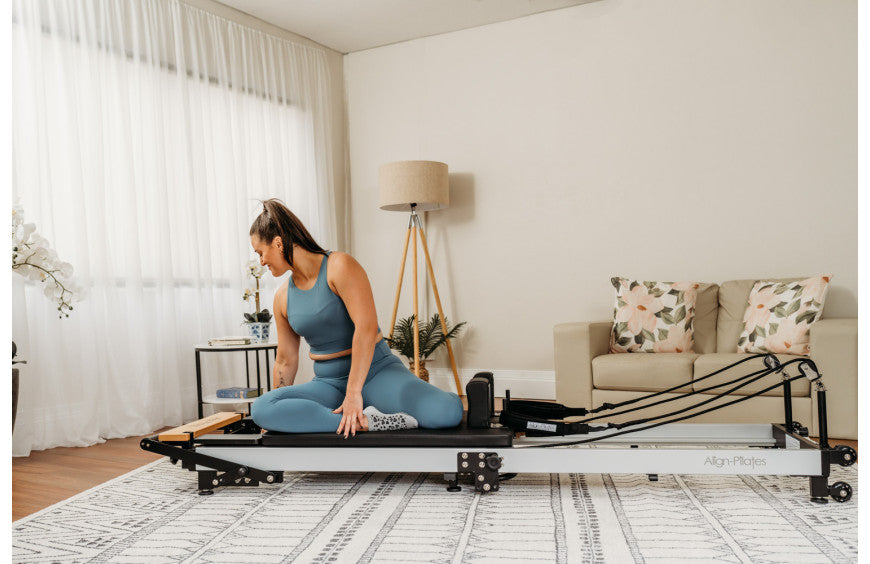Foldable Or Non-Foldable Reformer?

Should I buy a foldable Pilates Reformer?
Possibly, the first question most home Pilates enthusiasts ask!
Most clients considering a foldable Pilates reformer are doing so, due to their space requirements. More importantly, one needs to take note of the negatives which can be hidden within the finer details of foldable Pilates machines.
Can I slide it under the bed?
There are Pilates Reformer machines which are small and lightweight so that sliding it under the bed is a possibility. However, to achieve this, the carriage bed is dimensionally small, meaning you feel cramped. These Pilates Reformers use rubber bands instead of springs for resistance, which need to be replaced more frequently due to wear and tear. Each of these features can limit the exercise range you wish to achieve.
Lightweight means less material is used, which begs the question, ‘what strength tests have been done to test the weight limits and longevity?’
Can I wheel into the cupboard?
Cupboard storage is usually possible with most models. The real question here is ‘how easy is it to fold and wheel’?
One of the most obvious requirements for most clients purchasing a foldable Pilates reformer is easy foldable abilities. The last thing you want after your workout is to then have a second workout trying to fold your reformer back up. Some models even require you to remove the carriage first and then lay the reformer on its side to fold.
When looking to buy a foldable reformer for home, keep an eye out for demonstration videos available online showing how the reformer folds.
Can it have longer legs?
You may have noticed some foldable reformer options available with extension legs, raising the height of your reformer. The issue here will again be how can you fold and put it away? It is now a giant ‘A frame’ which won’t fit in the cupboard or under a bed.
Often, wooden foldable reformers with legs are screwed into the wood with small wood screws, which cannot handle the side directional movement made when using a reformer. No use having legs that will simply fall out and become unusable.
Wooden Folding or Aluminium?
Be wary of reformers made from beech wood! Though lighter than Maple, it is not as strong and quite orange in appearance. As mentioned before, wood is not the best supporter for screw in components such as legs and hinges, often becoming loose in the long term.
Forgetting to support the jump board with the foot bar, can be detrimental to your wooden reformer, as the weak joinery cannot handle this type of pressure.
Will I feel a bump during use?
The simple answer here is yes. However, when you consider the range of movements within the Pilates repertoire, for the most part, the wheels of the carriage should work either side of the join. However, when using a Jump Board, you will feel a bump in most cases as you’re extending the carriage to the end of the runners.
There are some Foldable Pilates Reformers like the Align-Pilates F3 which have a clever way of not crossing the centre join. Unfortunately, removing the inconvenience of the ‘bump’ also removes the convenience of having the option to add a platform extension mattress. In the case of the Align-Pilates F3 Reformer, we have provided a fixated wide anti-slip platform at the end of the reformer to compensate.

Should you buy a foldable Reformer?
If you desperately need to fold away your reformer machine due to space issues, then a foldable Pilates reformer is a suitable choice. Keep in mind, foldable doesn’t always mean more affordable, and often, the difficult process of folding the reformer will mean you’ll never fold it anyway.
It may be worth considering the Align-Pilates H1 Reformer. The H1 is a home designed reformer, is affordable, and can easily stand vertically without leaning on a wall, which is great even for those conscious space savers!




